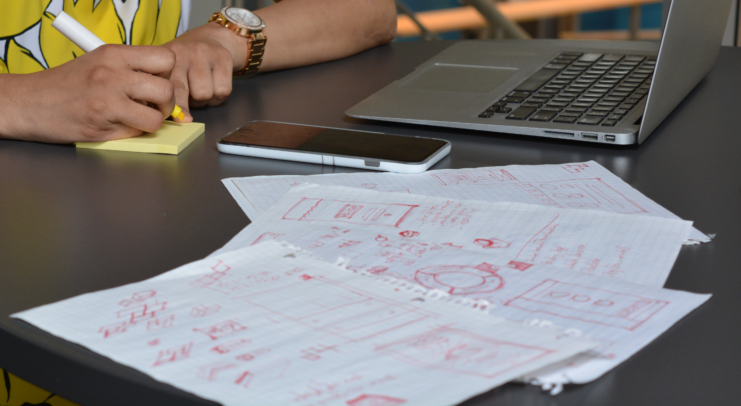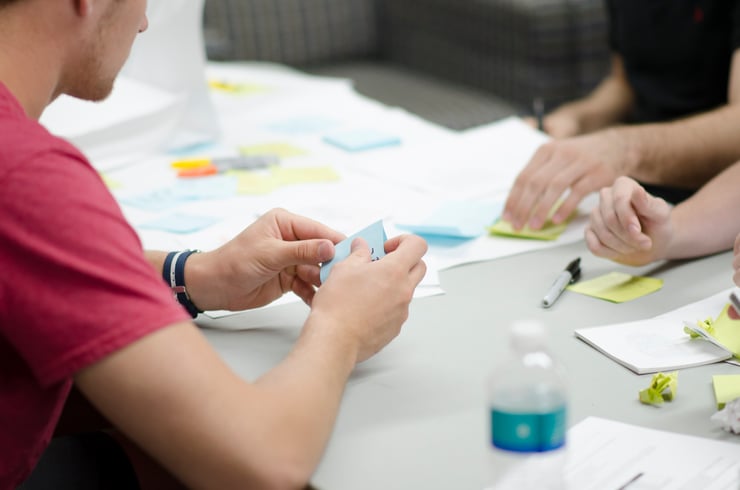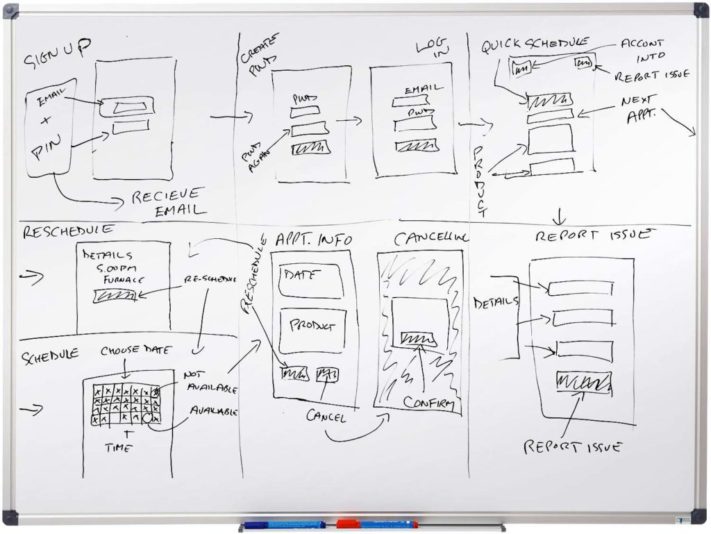Product discovery is an important yet often overlooked aspect of product development. Too often, usability is emphasized at the expense of utility. While the former is crucial, it is empty without considering the latter. According to a recent Clutch survey, nearly 70% of app development firms surveyed require a discovery stage before moving forward with a project. Product discovery is a process that helps us make sure we’re not just creating products that are usable, but also useful.
At Voila Hub, the way we tackle product discovery encompasses both usability and utility. We look at 4 key areas:
- Problem Definition
- Exploring
- Solutioning
- Prototyping
We’ll look at each of these areas, as well as the steps within. While processes for product discovery vary from organization to organization, we find that following these steps produces the best results.
Problem Definition

1. Define The Goal
At the basest level, why are we building the product? What is the long-term goal? Identify this and write it down. You also want to include assumptions and obstacles. To reach our goal, what has to be true? What assumptions are we making with the product? What might cause us to fail to reach our goal?
2. Map The Process
Identify and map the user journey. For each user, what jobs (actions) must they take to reach the desired goal? List the users on the left, the story ending (goal) on the right, and all the actions in between.
3. Ask The Experts
Once you have mapped the process, you can identify the internal experts you need to talk to. The experts you need to involve will vary depending on what the user journey maps are, but typically they will be employees who use the existing product or are involved in the existing service. They understand what the current process is, what’s working, and what areas need improvement.
4. Write Down The Problems As Opportunities
For each problem, you identify in the existing process or product, write it down as an opportunity statement. For example, if the problem is that it takes two hours to process a customer request, the opportunity can be “how might we reduce processing time for customer requests?”
Exploring

1. Explore Solutions
By now, you have all of your opportunities laid out. Hold a session where you hash out possible ideas and solutions that are related to those opportunities. Essentially, you are coming up with a variety of ways your product and features therein could potentially resolve pain points.
2. Sketch Possible Solutions
Take the ideas you have from the last step on paper. Sketch out each of the solutions to visualize what they would look like in the product.
Solutioning

1. Choose A Solution
From the solutions you have identified, decide which one is the best for each problem that was mapped out during the Problem Definition phase. There will likely be multiple solutions for each problem; the purpose of this exercise is to determine which is the best.
2. Storyboarding
Map out how the solution will actually look and work in the hands of the end user. This step provides guidance on the user flows for app prototyping, the next phase in the product discovery process.
Prototyping
1. Create Prototype
The app prototyping phase is where you create a visualization of your app. Using the storyboard as a basis, build an interactive and clickable sample of the product experience to demonstrate how it will work (we also like to create mockups to provide a polished and branded representation of the product composition).
2. Validate
Once you have a working prototype created, validate the product by conducting user testing. Organize a focus group to collect feedback; your focus group can consist of internal team members or people you’ve located through a user testing tool/service. Collect feedback on your app prototype – how people interact with it, the issues they are running into, what they say about the experience, etc. – and use this to guide the direction of the product.
Using this approach to product discovery allows you to focus on both the utility of the app (is it really solving a problem and adding value?) and the usability (what is the user’s experience with the product?). This provides the foundation necessary to begin developing a product that will truly add value to your users and have a much greater chance of success in the market.


![The Step-By-Step Guide to Product Discovery [Infographic]](https://www.voilahub.com/hubfs/Imported_Blog_Media/DSC_0960-e1516292281919-2-1-1.png)
![The Step-By-Step Guide to Product Discovery [Infographic]](https://www.voilahub.com/hubfs/Imported_Blog_Media/Blog-Photo-PlanningMVP3-2-1-1.png)